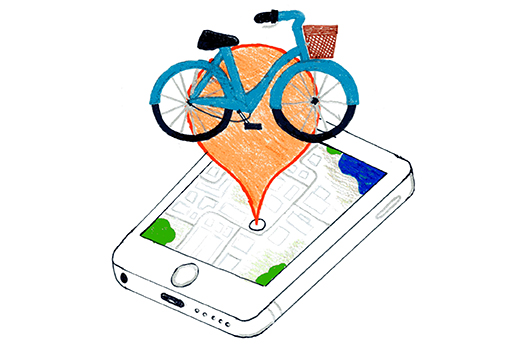B-Cycle, Austin’s station-to-station bicycle sharing system, launched a pilot program at UT last month. Rides under 60 minutes became free for all UT students.
And B-Cycle immediately became popular. Within five days, over 2,000 Longhorns signed up for the service and used it to take nearly 5,000 trips. Now, it’s a little too popular. B-Cycle has started running out of bikes — and to fix this, B-Cycle needs a price hike.
“There (are) definitely busier times in the day,” says Robert Hughes, a third-year history and geography major who uses B-Cycle every day. “Like 15 minutes before the hour, when everyone’s getting to class, (the racks) are quite often empty.”
When lots of students use B-Cycle to get to class or back home at the same time, the result is predictable: no bikes at the most popular stations.
Friday, 6 p.m.: No bikes at the PCL. No bikes at the stadium.
Monday, 9:30 a.m.: No bikes at 23rd and Rio Grande. No bikes at Rio Grande and 28th.
Monday, 4:30 p.m.: No bikes at the PCL again. No bikes at Guadalupe and Dean Keeton.
The rest of the B-Cycle stations throughout downtown and East Austin had plenty of bicycles available.
According to Michael Sadler, an economics lecturer who formerly taught Urban Economics, the dearth of bikes at UT stations is probably the result of B-Cycle’s low, low price of free — combined with simple economics.
“Obviously, there’s excess demand at a price of zero,” Sadler says. “When things are free, there’s going to be an awful lot of demand for (them).”
To alleviate this, B-Cycle could add more bikes, or balance them out between stations more often. But Sadler said that’s a band-aid solution for a gaping economic imbalance.
“If the idea is to make it affordable for everybody, then you have … to have an almost unlimited amount of supply,” Sadler said. “And that’s not going to be feasible. Especially at zero price because there’s a cost involved to all of this (maintenance and infrastructure).”
Sadler instead recommends a surcharge for high-demand travel periods — it would be similar to Uber’s surge pricing. “You’ve got to make the prices higher in the peak times … you have to find some other way to ration the resource,” Sadler said.
Although the company did not respond to a request for comment, clearly B-Cycle needs to adopt Sadler’s solution.
Understandably, you’d probably hate to give up free rides, but it might be the only way to guarantee that a bike will be available for your 5-minute morning rush to class. What good is free bicycle sharing if finding a bicycle to ride is a game of chance?
For now, students like Hughes try their best to maximize their chances. “You just have to time it … get there a little bit earlier, when people are dropping (the bikes) off,” Hughes said.
Young is a computer science senior from Bakersfield, California. He is a senior columnist. Follow him on Twitter @ryanayng.





















